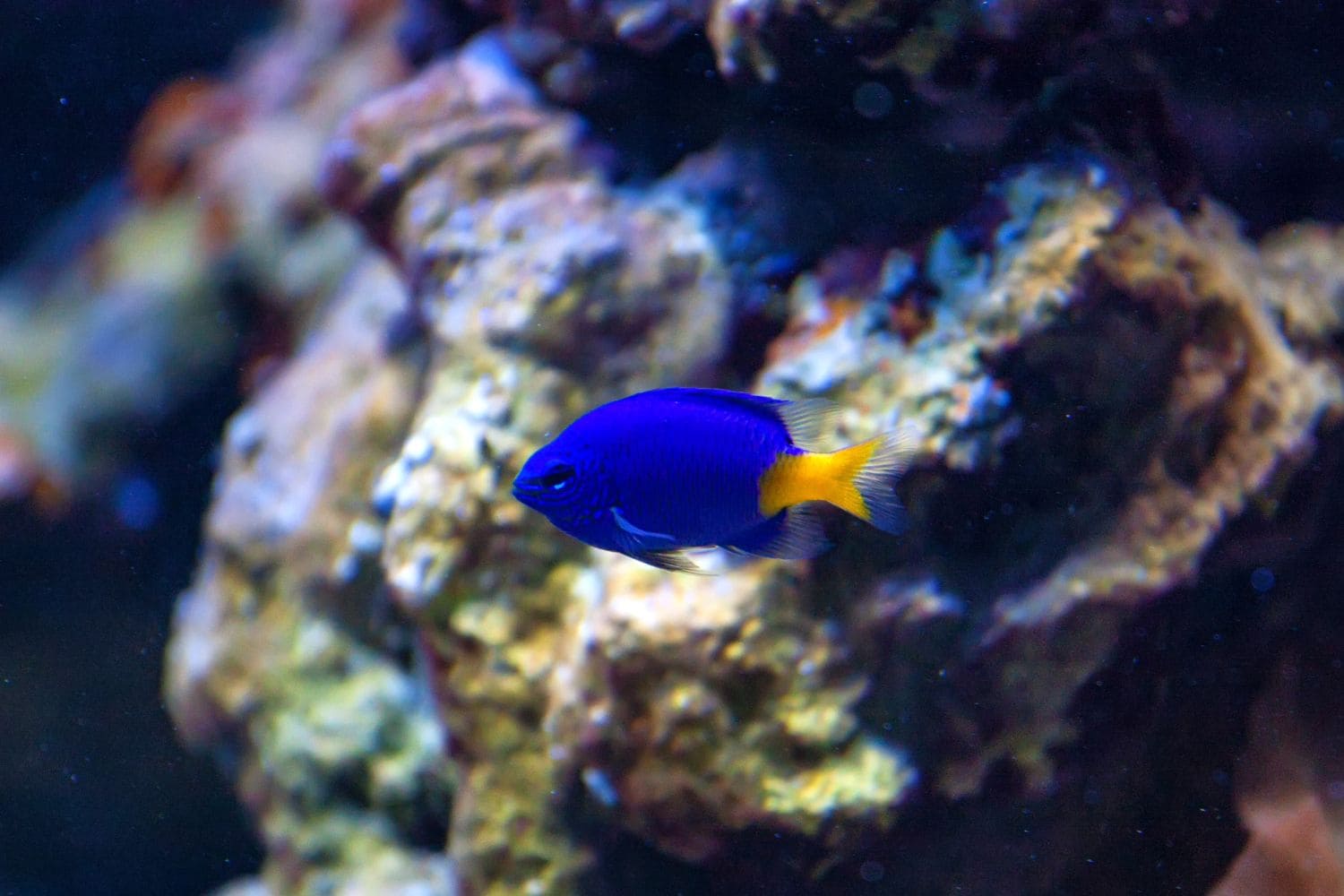
The Blue Devil damselfish, or Chrysiptera cyanea, is a popular colorful fish that’s ideal for many saltwater tanks. They’re active and unique in their appearance, but they do require some precautions as more aggressive fish.
In this care guide, we’ll go over some aspects of the Blue Devil damselfish to consider before purchasing one or more specimens of this species.
The Blue Devil damselfish is potentially aggressive and won’t get along well with passive fish or other damselfish. Instead, you’ll want to keep this fish with larger species that can hold their own in a tank that’s at least 30 gallons.
The Blue Devil damselfish has a potentially long lifespan with the right care. Under the right circumstances, this fish can live for up to around 15 years. As long as you feed it right and keep a healthy environment for this fish, it will bring you many years of enjoyment.
These fish are on the smaller side and won’t grow too large. You can expect your Blue Devil to grow to around three inches. While aggressive, you don’t have to worry about them taking up too much space and claiming a large area for their territory. On the other hand, they are highly active and tend to explore, so you may do better with a larger tank, regardless.
The aggressiveness of the Blue Devil makes it difficult to find suitable tank mates. They’re highly territorial and won’t hesitate to go after other more vulnerable fish. This is why it’s best to keep other fish in the tank that won’t fall victim to the Blue Devil, including other damselfish, dottybacks, and wrasses.
Conversely, you should avoid keeping larger and equally aggressive fish with the Blue Devil, as it’s smaller and may not be able to survive with the wrong tank mates. Some tank mates to avoid include eels, lionfish, triggerfish, and pufferfish.